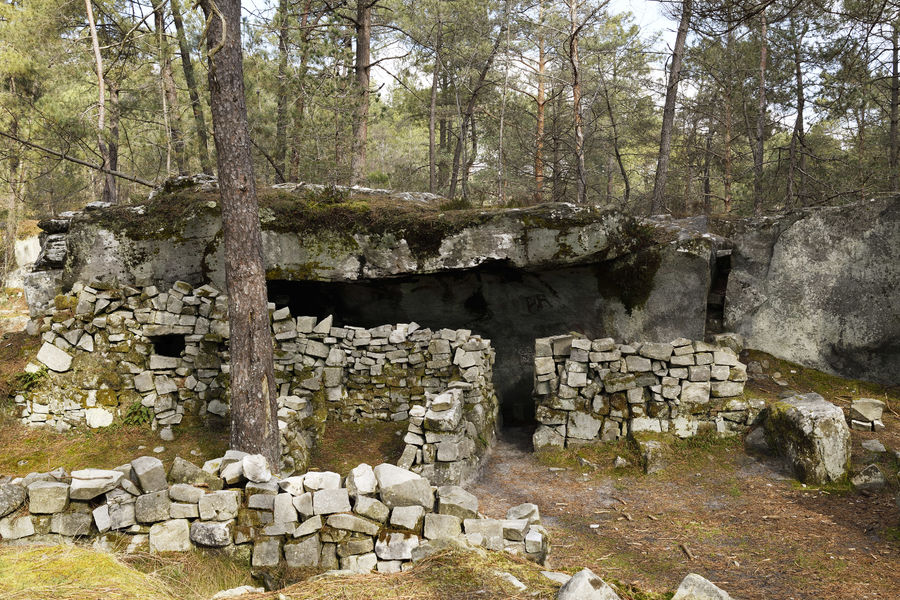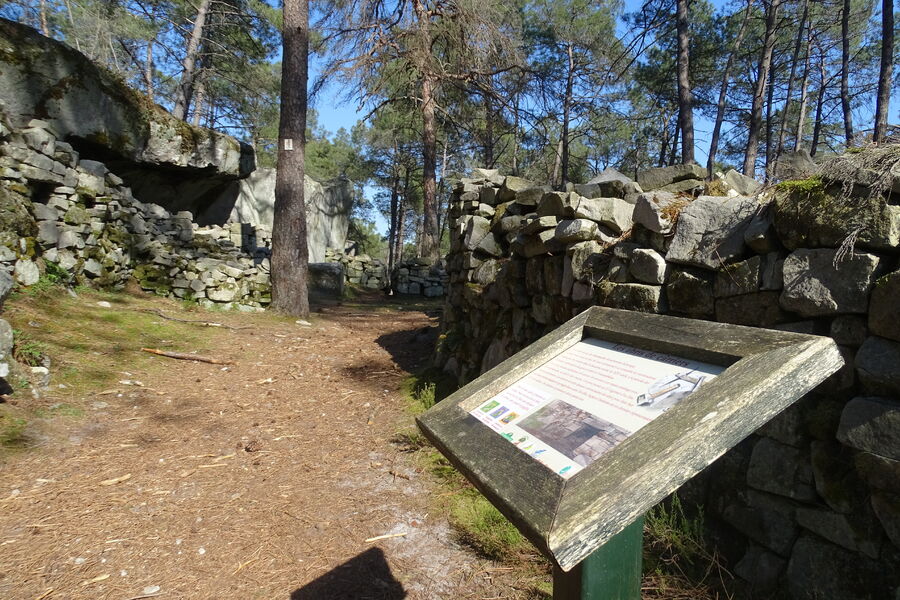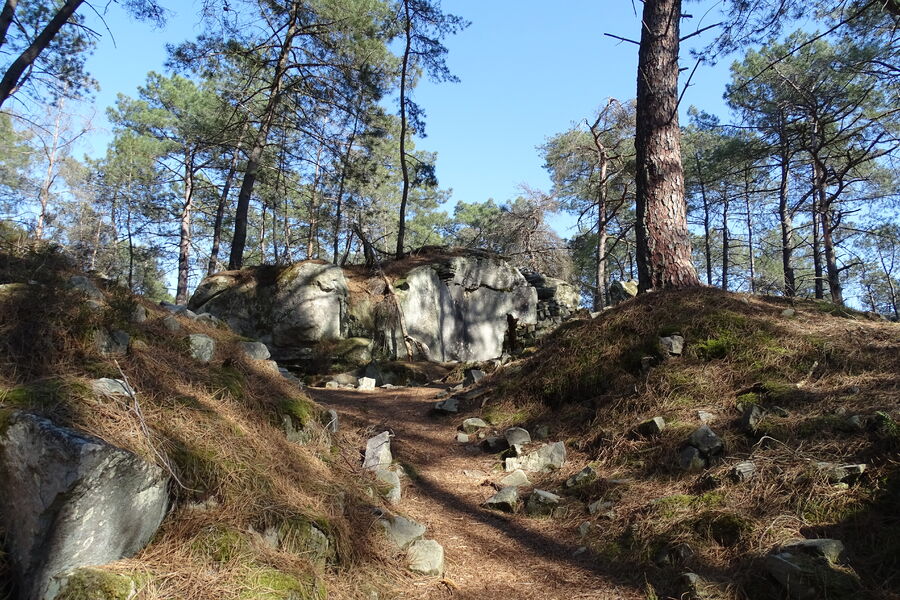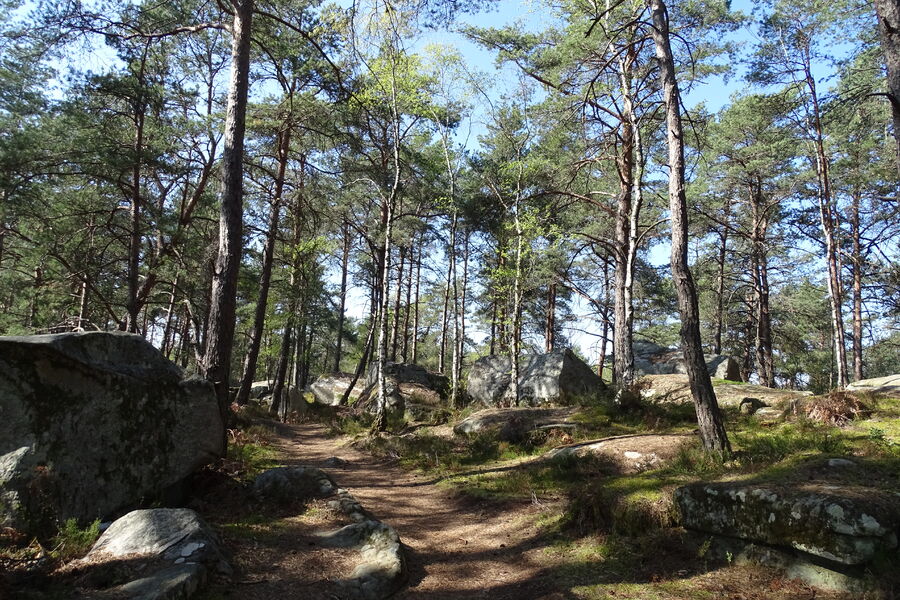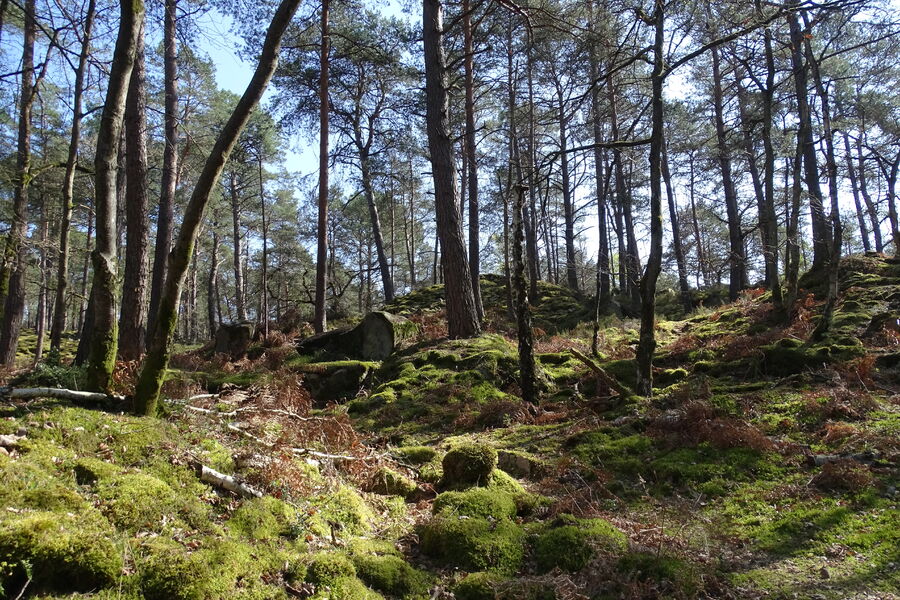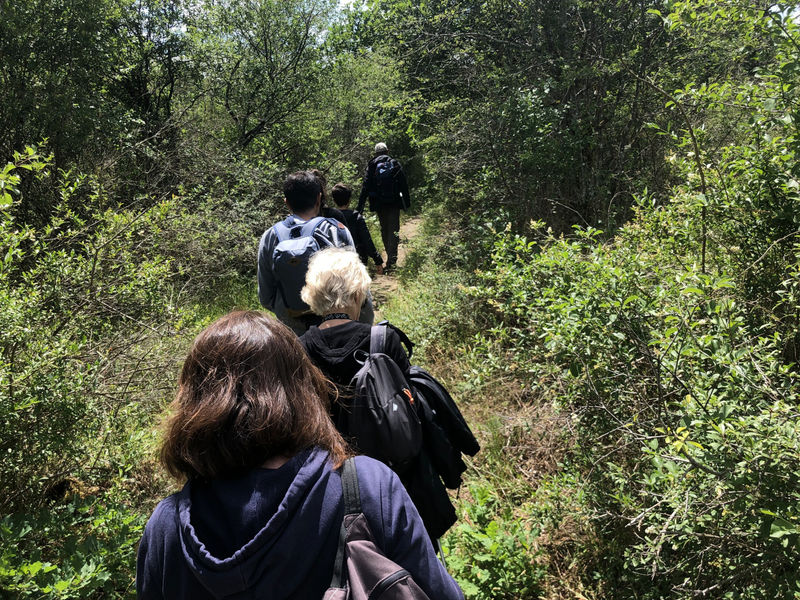Quarrymen trail
Présentation
This trail offers a discovery of the ancient sandstone quarries of the forest of
Fontainebleau. Sandstone rocks can soon be seen, with their sand grains naturally cemented, but also ancient quarry faces or quarrymen shelters.
Fontainebleau. Sandstone rocks can soon be seen, with their sand grains naturally cemented, but also ancient quarry faces or quarrymen shelters.
Sandstone quarries: the quarrying of Fontainebleau sandstone is a little-known
industrial heritage of the forest. Early records mention this activity as early as the 13th century. It lasted until 1907. Many exceptional remains of this activity are still visible in the forest. Along this trail, you will discover quarry faces,
quarrying traces, and 19th century quarrymen shelters. In particular, it is thanks to the labor of the Fontainebleau quarrymen that the streets of Paris could be paved. This population, whose toil was exhausting, was prone to revolt and
created one of the first mutual aid societies.
The Cave of the Oath: it is the work of Claude-François Denecourt. He had taken the oath not to undertake any new works in the forest, and thus called this cave “the last Denecourt extravagance”. The letters “DFD”, and the 1853 date, are engraved in the entrance.
This trail offers a discovery of the ancient sandstone quarries of the forest of
Fontainebleau. Sandstone rocks can soon be seen, with their sand grains naturally cemented, but also ancient quarry faces or quarrymen shelters.
Sandstone quarries: the quarrying of Fontainebleau sandstone is a little-known
industrial heritage of the forest. Early records mention this activity as early as the 13th century. It lasted until 1907. Many exceptional remains of this activity are still visible in the forest. Along this trail, you will discover quarry faces,
quarrying traces, and 19th century quarrymen shelters. In particular, it is thanks to the labor of the Fontainebleau quarrymen that the streets of Paris could be paved. This population, whose toil was exhausting, was prone to revolt and
created one of the first mutual aid societies.
The Cave of the Oath: it is the work of Claude-François Denecourt. He had taken the oath not to undertake any new works in the forest, and thus called this cave “the last Denecourt extravagance”. The letters “DFD”, and the 1853 date, are engraved in the entrance.
Free access.
All year round.
| Fichier | |
|---|---|
| Télécharger | |
| Téléchargez la trace GPS du sentier des carriers | Télécharger |
| information sur le parcours | Télécharger |
| livret | Télécharger |

